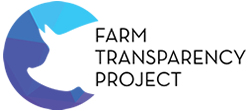Abattoirs / Slaughterhouses
Meat, dairy and egg products, and some entertainment industries such as horse or greyhound racing, involve the slaughtering (killing) of animals, whether directly for human consumption, or as “waste products” of the industry. Most of this killing is carried out at slaughterhouses, also known as abattoirs, which operate primarily for human consumption. Animals deemed unfit or unsuitable for human consumption are killed at similar, but generally much smaller, facilities called knackeries. By-products from slaughterhouses or knackeries that are not for human consumption are processed at facilities called rendering plants; sometimes the rendering plants are located within the same facility.
Slaughterhouses can range from being huge industrial facilities with hundreds of workers, to small sheds with only a handful of employees, or even backyard operations run entirely by the owner of the property. There are roughly 250-300 commercial slaughterhouses in Australia, though many of these are no longer operating. The slaughterhouse workforce in Australia consists of around 25,000 employees. It is a predominantly young workforce with around half of all workers younger than 35.
Every year in Australia, 520-620 million animals are killed at abattoirs, mostly for meat (direct human consumption), roughly broken down as follows:
- 460-550 million broiler (meat) chickens
- 3-5 million turkeys
- 8 million ducks
- 4-5 million pigs
- 11-12 million layer hens
- 4 million bulls, bullocks and steers
- 3 million cows and heifers
- 7 million cattle
- 700000-900000 calves (either as 'veal' or as “waste products” of the dairy industry)
- 5-7 million sheep
- 17-19 million lambs
A further 12 million male chicks are killed at hatcheries as unwanted by-products of the egg industry. A significant number of killing also occurs on the farm, whether direct killing or as a result of neglect (e.g. smaller dairy farms may leave their unwanted calves out in the paddock to starve; an estimated 15 million lambs die every year within 48 hours of birth due to inadequate protection from harsh weather).
Most animals killed at Australian abattoirs are supposed to be rendered unconscious by various stunning methods before having their throat cut open to be bled out (referred to as the “sticking” process; a slash across the throat for sheep, a stab into the throat for pigs and cattle), however this does not always happen, as a small number of facilities have permission from state governments to kill without prior stunning, and more generally, stunning is not always done effectively/correctly.
References
With the exclusion of turkeys, ducks and layer hens, the numbers above are from the years 2010-12, extracted from statistics compiled by the Australian Bureau of Statistics (ABS) showing livestock slaughtering figures for the last several decades, available here:
- Excluding chickens, turkeys, ducks and layer hens:
www.aussieabattoirs.com/documents/Livestock slaughtered - excluding poultry.xls - Chickens:
www.aussieabattoirs.com/documents/Livestock slaughtered - chickens.xls - Original source:
http://www.abs.gov.au/AUSSTATS/[email protected]/DetailsPage/7215.0Jun%202012?OpenDocument
| Articles within this section | Last updated |
|---|---|
| Age of animals slaughtered | 10 November 2025 |
| Halal and kosher slaughter | 13 October 2017 |
| Stunning and Killing | 13 October 2017 |
| Transport | 23 August 2025 |
| What's wrong with slaughter? | 15 December 2019 |
| Glossary | 11 January 2020 |


